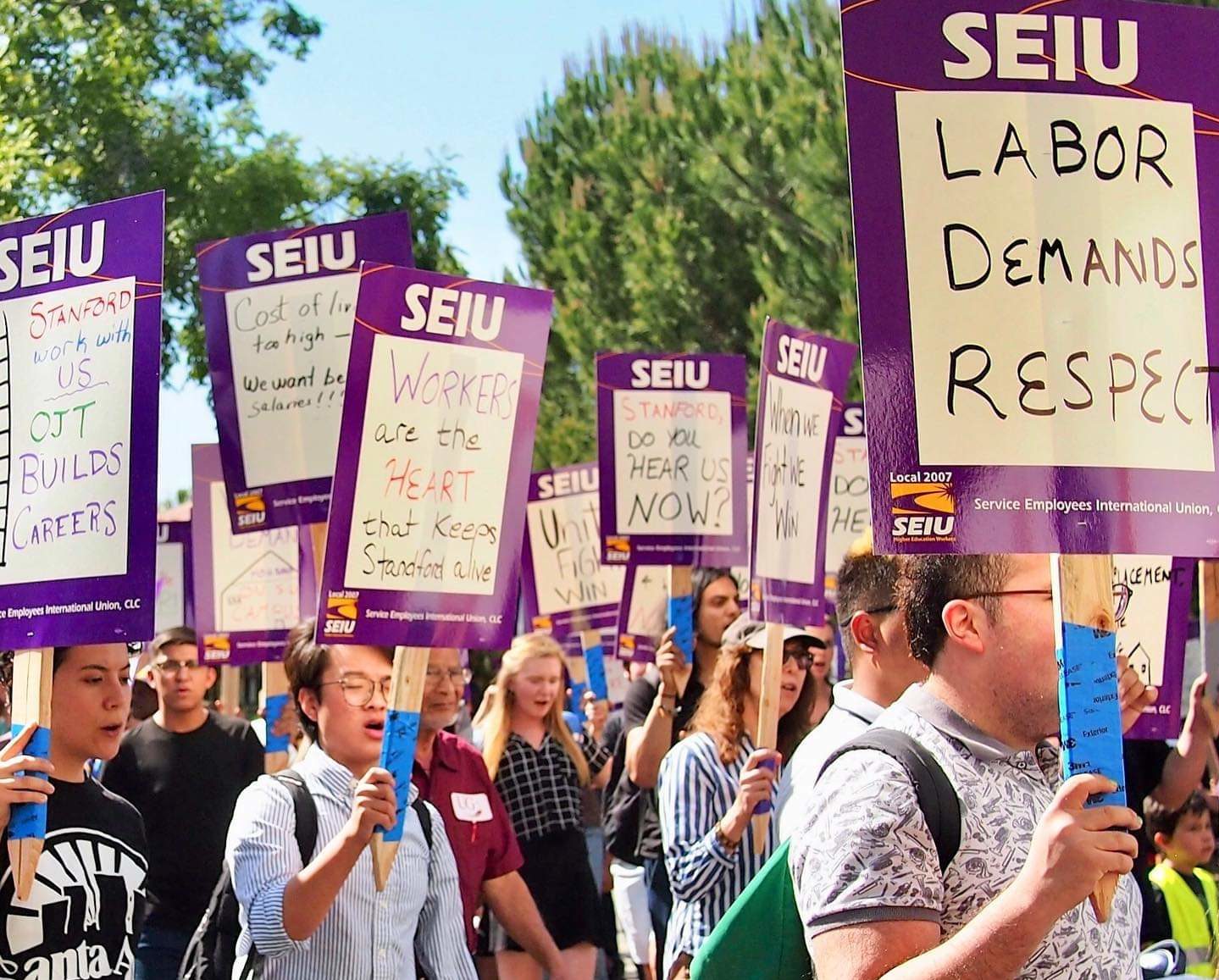Stanford’s Affordability Task Force fails to center service workers’ struggles
On Jan. 7, Stanford’s Affordability Task Force (ATF) announced a set of five new benefits to take effect in 2020 for faculty and staff, including expansions to family leave and healthcare and the creation of an employee emergency assistance fund. Initial coverage of the benefits has been sympathetic, and Elizabeth Zacharias, chair of the ATF, has claimed that the benefits are part of Stanford’s “longstanding commitment to addressing key affordability needs of its constituents.” Yet, press from the University has obscured a key fact — service workers were excluded from the ATF process from the very beginning.
Service workers were deliberately excluded from the ATF’s decision-making process, but the ATF is now taking credit for their hard-fought gains
When the ATF was formed in fall 2018 to address affordability challenges “associated with housing, child care, transportation and benefits,” SEIU Local 2007, the union for Stanford’s service workers, asked the administration if it could participate in the task force. The union was told no. After pushing the administration, the union was allowed to make a 10-minute presentation in front of the ATF committee. That was the extent of its inclusion in the research process. This exclusion is particularly jarring, as among the ATF’s five target constituencies — faculty, academic staff, postdoctoral scholars, graduate students and staff (where service workers are meant to be included) — it’s easily Stanford’s service workers who struggle most seriously with affordability issues. Currently, entry-level food service workers at Stanford have a starting salary of $18.24 an hour — less than Santa Clara County’s own living wage standard of $19.92 an hour for employees with healthcare and retirement benefits.
Instead of including service workers in decisions regarding affordability, the University has deliberately excluded them from the ATF. Yet the University has the nerve to paint its released package of benefits as “recommended” by the ATF when, in fact, three of the five benefits were negotiated by Stanford service workers as part of their collective bargaining process with the University. This was a process entirely separate from the ATF, as service workers weren’t represented on that task force. Of the five benefits announced by the ATF as recommendations, three were won, not through the task force’s generosity, but through the collective bargaining efforts of unionized workers: the expansion of paid family leave, extended eligibility for healthcare and increased back-up care days. For these benefits, the ATF’s decision-making power basically amounted to extending benefits fought for by service workers to other Stanford constituencies — a move that hardly requires 1.5 years of long-range planning. If one only counts the recommendations that the ATF came up with on its own, they amount to affordability band-aids: the ability for employees to make a one-time withdrawal from their retirement fund and the creation of an employee emergency assistance fund. These recommendations, far from the long-term solutions to the affordability crisis that the ATF was supposed to address, are basically quick infusions of cash for employees under extreme financial duress.
The ATF’s recommendations fail to address housing, wages or transportation
In addition, the ATF’s recommendations are particularly revealing with respect to what they exclude. There’s no recommendation having to do with affordable housing, which, coupled with the University’s withdrawal of its General Use Permit last year, leaves Stanford with no tangible commitment to addressing its gentrifying impact. (Although the ATF website mentions workforce and postdoc housing, this is situated in Redwood City and is a result of Stanford’s expansion there — as such, it’s not housing that addresses the issues faced by service workers who staff Stanford’s main campus.) There’s no mention of Stanford’s living wage policy, which, apart from annual increases, has remained essentially unchanged since 2007. And there’s no mention of adjustments to transportation benefits, despite workers having to commute from farther and farther away in order to escape rising costs of living in the Bay.
All in all, Stanford’s ATF offers nothing but stopgaps and false solutions. If Stanford were truly committed to addressing affordability issues and standing by its community members, especially service workers, it could adjust its living wage policy, commit to building affordable housing for service workers, expand transportation benefits and actively involve service workers in the choices that affect them instead of excluding them and claiming their efforts as the University’s own. But it’s altogether unsurprising that the ATF’s only self-generated recommendations amount to nothing more than financial stopgaps. After all, no task force comprised to solve the problems of a community can be effective if it doesn’t involve that community in the first place.
— Ethan Chua, member of Students for Workers’ Rights
Contact Ethan Chua at ezlc327 ‘at’ stanford.edu.
